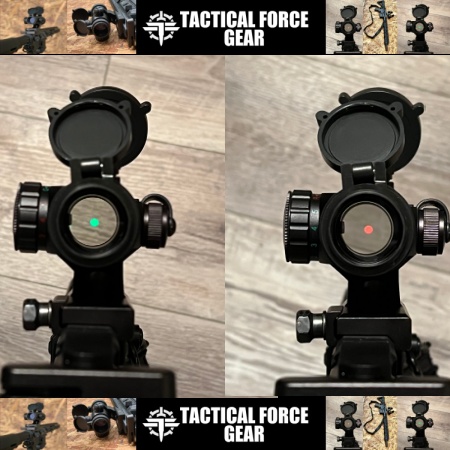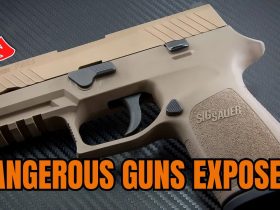Shell Shock Technologies claims numerous advantages of its steel-cased ammo, but the most apparent advantage is how much less it weighs.
In the March 2018 edition of this column, I wrote about NovX ammunition. I mention this because NovX loads its ammunition in steel NAS3 cases. These cases are much lighter than brass, and according to the manufacturer, they’re twice as strong. It’s a unique two-piece case design that is magnetic, allowing you to easily pick them up with a magnet. This is important because the manufacturer of the NAS3 stainless steel cartridge case is Shell Shock Technologies, and now the company is offering—direct to consumers—its own line of ammunition branded as Shell Tech.
Shell Tech (shellshocktechnologies.com) currently lists four pistol loads and six rifle loads on its website. These include .380 ACP, 9 mm, 5.56 NATO and 300 BLK. (Oddly, on the website, Shell Tech lists 300 BLK ammo as 300 “ACC” Blackout. A misprint, I assume.) Prices are competitive. The Shell Tech 124-grain 9 mm load with Nosler ASP bullets sells—direct to consumer—for about $1 per round. Nosler offers the same load in brass cases for about 75 cents per round. Clearly, you’re paying for the NAS3 case, so what are the advantages it offers?
NAS3 cases sort of look like belted magnum cases, but they’re not. What appears to be the belt is the juncture of the case’s two parts. Shell Shock Technologies makes the base of the rifle case from magnetic stainless steel and the base of the pistol case from non-magnetic aluminum. The company makes the case body for rifle cases from a non-magnetic stainless steel, and the case body for pistol cases from a magnetic, high-tensile nickel alloy. According to Shell Tech, in addition to being magnetic, lighter and stronger, the advantages of NAS3 cases also include: no ballooning when fired in unsupported chambers, better initial combustion, less abrasiveness than brass, self-lubrication, corrosion resistance, more consistent round-to-round performance, coolness to touch at ejection and durability, as the cases can be reloaded more often.
Shell Tech also claims the cases can withstand higher pressures. That may be true, just as we’ve seen with the steel case of the new 7 mm Backcountry cartridge. However, this is mostly a moot point with a SAAMI-approved cartridge, which should be loaded to a SAAMI-approved maximum average pressure. Of course, a brave handloader could exceed published and verified load data, but this is foolish—and could be disastrous—regardless of the cases with which you’re working. Also, to reload the 9 mm cases you’ll need a special set of dies Shell Tech lists on its website for $85.95. These dies have a stem that pushes the sized case out, and you must lube the case before sizing. Unfortunately, you cannot reload NAS3 rifle cases.
Shell Tech provided some of its 9 mm and 5.56 NATO ammunition. Its 9 mm ammo was loaded with the aforementioned 124-grain Nosler ASP bullets and the 5.56 NATO ammo was loaded with a copper hollow-point bullet of unnamed manufacture. However, to me, the 55-grain copper hollow-point bullet looked very similar to a 55-grain Nosler E-Tip (Expansion-Tip) bullet without the polymer tip. All the benefits claimed by Shell Tech are appealing, but mean very little if the ammo does not perform. So, I evaluated the 9 mm ammo in the new 4-inch-barreled Ruger RXM pistol outfitted with a Trijicon RMR. I tested the 5.56 NATO ammo in my home-built AR-15 with a 16-inch barrel equipped with an EoTech 1-10×28 mm Vudu riflescope and a Banish Backcountry suppressor.
The 9 mm Shell Tech load delivered velocities slightly more consistent than other loads I tested in the Ruger RXM pistol. The company advertises this load at 1,100 fps, but out of the Ruger RXM it registered 1,155 fps, which is on the high side for 124-grain loads from a 4-inch barrel. This load also delivered the smallest groups when compared to other loads I tested in the RXM. Using a sand-bag rest at 10 yards, the Shell Tech 124-grain Nosler ASP load averaged less than 1 inch, with a smallest group measuring .74 inch. I also fired this load into a block of Clear Ballistics at 10 yards. On average the ASP bullet retained 98 percent of its weight, penetrated 10 inches and upset with a frontal diameter of .624 inch.
On its website, Shell Tech advertises the 5.56 NATO load at 3,150 fps. Yet, the box lists the velocity at 3,350 fps. I think this is a misprint as well; that is a bit fast for a 55-grain 5.56 NATO load. At any rate, it averaged 3,105 fps, and velocity consistency was average for 5.56 NATO ammunition. From a precision standpoint, this load averaged 1.282 inches for four, five-shot groups, with a best group of 1.152 inches. My AR-15 shoots most loads into less than 1.5 MOA, so this was average performance from that rifle.
I also fired the 5.56 NATO load into blocks of Clear Ballistics at 25 yards. With an impact velocity of 3,100 fps, the petals sheared off the bullet. This is not uncommon with some mono-metal bullets at high impact velocities. It left the shank of the bullet—weighing 23 grains —to penetrate between 18 and 20 inches. The petals sheared inconsistently, and I recovered them in various sizes weighing between 3.0 and 13.0 grains. After shearing, the petals radiated out from the main track of the bullet by about 1 to 2 inches and continued to penetrate to between 4 and 10 inches. I suspect this bullet would hold together and mushroom more conventionally when impacting at less than 3,000 fps.
The Shell Tech ammo performed well with no stoppages of any kind. The 9 mm load shot with great precision, and both loads delivered velocities at or faster than what’s expected for the bullet weights from each cartridge. The downsides are you can’t reload the rifle cases, and to reload the pistol cases you need special dies and must lubricate before sizing. I also found Shell Tech’s claim that the cases ejected “cool to touch” false—they might not eject as hot as brass, but if one goes down your shirt, you’ll know it, and you won’t like it.
The real advantage of Shell Tech ammo is weight, which is appealing in military and law enforcement applications, as well as in some sort of survival/bug-out situation. The ammunition I evaluated weighed between 15 percent (5.56 NATO) and 18 percent (9 mm) less than comparable brass-cased loads. That means if you were carrying 5 pounds of 9 mm ammo, you could carry 216 rounds of Shell Tech ammo as opposed to 183 rounds of brass-cased ammo. With the 5.56 NATO, the 5-pound advantage would be 28 rounds. With either cartridge, that’s enough to matter.
Read the full article here




Leave a Reply